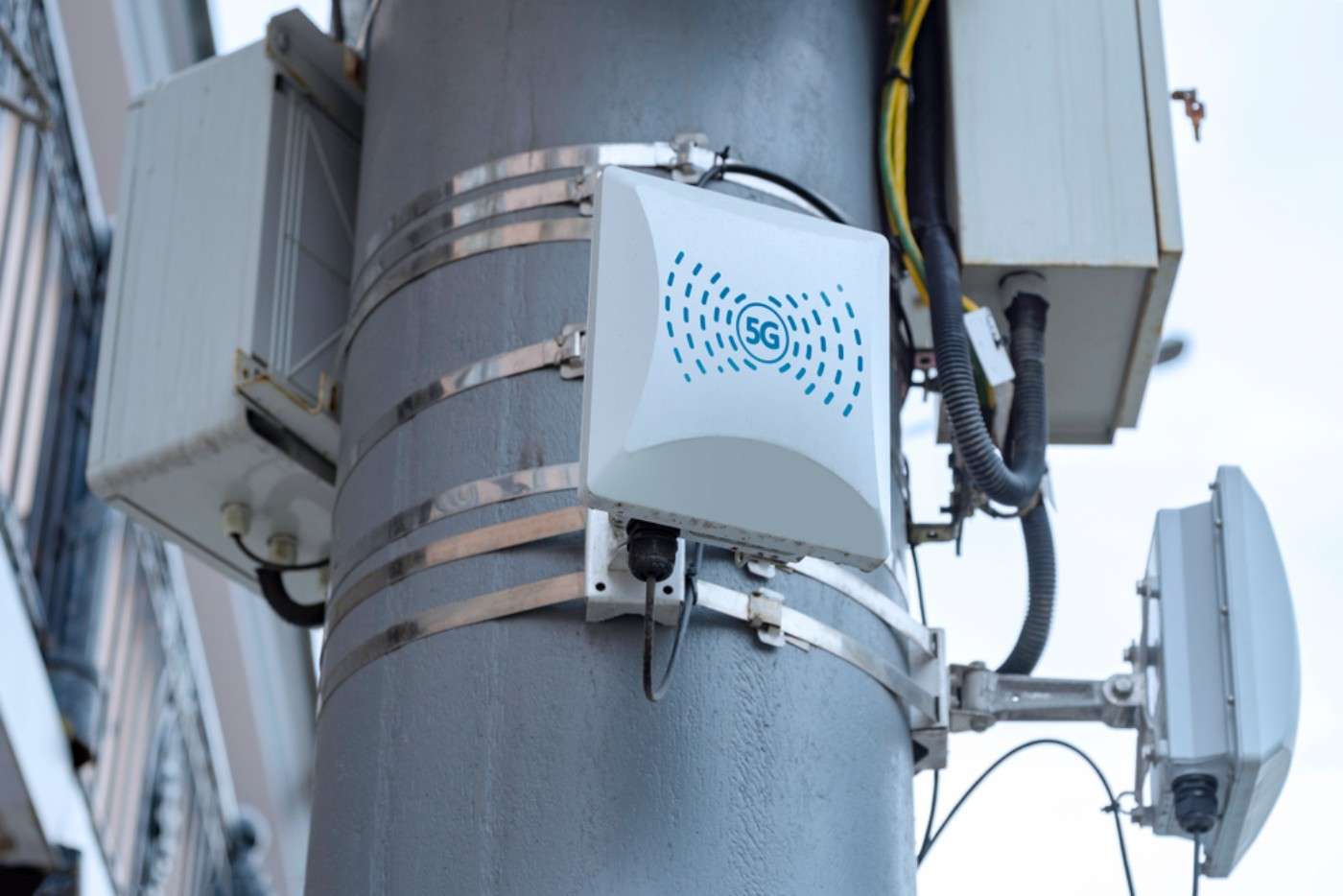Contents
What is a 5G small cell?
5G small cells are a type of cellular base stations that are relatively smaller in size and capable of transmitting radio signals. The objective of small cells and 5G technology is to enhance wireless 5G network connectivity in specific areas as they can facilitate millimeter (mm) wave frequencies with high-speed broadband connectivity.
The global 5G small cell market size is predicted to balloon to around $17,945 million by 2028, growing at a CAGR of 54.5% between 2021 and 2028. Research shows that the US plans to deploy nearly 5-10x more 5G small cells than macrocells in the coming days.
Various types of 5G small cells, each with specific characteristics, offer a range of applications. They include femtocells, picocells, and microcells – all supplying diverse coverage limits.
“Small cell” is basically a catch-all term used by mobile base stations following its growing use in amplifying signals in indoor settings, especially in places spread over several floors. Having deployed mm-wave technologies in urban spaces, there is now a need for several thousand 5G small cell antennas to support 5G network capacity.
While this close-knit nature of 5G network infrastructure is both high-priced and time-consuming, right now it’s the only way forward to serve the existing dense urban environments, especially establishments in congested locations such as stadiums, malls, and offices.
Types of 5G small cell networks.
| Types of 5G Small Cells | Deployment | Number of Concurrent Users | Power/Signal Range | Distance Covered |
| FEMTO CELL | Homes and company offices | 4-8 in homes; 16-32 in companies. | 10-100 mW (Indoor); 0.2-1 Watt (Outdoor) | Around 10 meters or more. |
| PICO CELL | Public areas, both indoor and outdoor – for example, airports, shopping centers, transport depots, and stations | 64-128 | 100-250 mW (Indoor); 1-5 Watt (Outdoor) | Around 10 meters or more. |
| MICRO CELL | Urban areas to serve macro coverage gaps. | 128-256 | 5-10 Watt (Outdoor) | Around a couple of hundred meters |
| METRO CELL | Urban areas to supply extra capacity. | > 250 users | 10 to 20 watts (outdoor) | Several 100 meters |
| Wi-Fi | Residences and businesses. | < 50 users | 20 to 100 mW (Indoor) 0.2 to 1 watt (outdoor) | Around 10 meters or more. |
5G small cell ecosystem
Small cells function like established cells with progressive techniques such as beamforming and mm-waves for transmission. Small cells and 5G technology can be used to effectively deploy low-power transmitting stations.
Also, 5G small cell hardware units are created to lower complexity, making implementation rapid and seamless.
With various indoor and outdoor applications, these 5G small cell base stations or transmitters can be wall-mounted indoors, with small towers and lamp posts available for outdoor use.
For ease of use, their backhaul connections are built using fiber, wire, and microwave connections, making the current setup much less cumbersome than earlier versions.
With the deployment of cell towers limited to the lower-level spectrum, 5G operators within urban settings will have to rely on emerging micro infrastructure such as small cells and 5G technology, together with conventional macro infrastructure, such as 5G towers.
However, certain restrictions that apply to conventional masts also apply to 5G small cells. They include:
- Operators ensuring adequate backhaul at the site – either fiber or wireless
- Provision of a suitable power source
- Operators having physical access to the site
- Negotiating with landowners or through government authorities
- Ensuring mobile network operators are not overcharged for the installation of 5G small cells in urban areas.
5G small cell regulations
Within the scope of emerging technologies, one of the biggest pain points is drafting a set of industry standards and definitions. To simplify this, the Small Cell Forum (SCF) – with members including Airspan, AT&T, Cisco, CommScope, Ericsson, Huawei, Nokia, Qualcomm, Samsung, and Vodafone – has started issuing the first “informed and consensual” summary titled, 5G small cell network architectures and product definitions.
The document presents an informed view of the most significant configurations and features for organizations deploying 5G small cells between now and 2025.
The report contains:
- Precise description of a 5G small cell network
- Essential indoor and outdoor 5G small cell deployment scenarios
- Synopsis of 5G small cell RAN architecture choices
- Outline of small cell regulations and power classes
- Reference to various hardware setups for the primary 5G small cell products anticipated to be launched over the next five years.
Earlier, small cells appeared relatively similar, regardless of the conditions where they would be deployed. They were distinct only in dimensions, weight, and power output from other mobile equipment. In today’s digital environment, the applications of small cells will be much more exhaustive, with much more varied configurations and architectures.
The SCF document aims to consolidate various views and definitions of the types of 5G small cells being currently deployed and those that will be rolled out in the future.
Small cells, or femtocells as they were earlier called, have played a central role in wireless networks since their deployment over a decade ago. While they have been in use for a long time, the definition of a 5G small cell has been shrouded in ambiguity.
The configuration, structure, power, dimensions, interfaces, and features will vary based on the use case and application scenario. With virtualized, disaggregated 5G networks, some 5G small cells will comprise two or three elements, while others will be all-in-one.
This makes it explicit that previous definitions were lacking. The current issue of industry fragmentation only emphasizes the several hundred designs with inadequate standard features to scale up.
The expectation from the document is that it will facilitate the networking industry to innovate within “common, agreed design frameworks”. These need to be capable of sustaining product variety while retaining scalability and interoperability as small cells and 5G technology will be installed in urban communities over the next five years.
Recommendations
According to a Gartner report, technology and service providers responsible for product planning and strategy for the communications industry need to:
- Enhance relevance through consistent investment in fundamental features to handle the CSPs’ indoor range and numbers required for large-scale deployment.
- Focus on varied
requirements from multiple industry segments and unconventional CSP
customers
- Improve digital service capability
- Partner with domain experts
- Simplify open vRAN adoption through pre-integrated, pre-validated solutions
- Demonstrate robust system integration and management capabilities.
Gartner’s research spans the market’s competitive situation by studying the main players across various sectors. The report also shows the varying definitions of the critical characteristics of the different types of commercially viable 5G small cell RAN products (which will be available over the next five years), including 3GPP and O-RAN Alliance 5G disaggregated open RAN specifications—basically, macrocells, microcells, and picocells.
Legislation
As of right now in the US, over 30 state legislatures have passed small cell legislation that regulates the deployment of small cells and 5G technology.
These laws consider the unique context of their state and local environment. However, guidelines can be established that are compatible with existing wireless industry standards, including:
- Simplifying applications to access public rights of way
- Fixing an upper limit on prices and payments
- Defining timelines for the review and operation of cell-site applications.
While there is pending mobile 5G and small cell-related legislation in 14 states, Alabama, Illinois, and Pennsylvania have enacted this legislation.
STL Tech
It is estimated that there will be 1.56 million private 5G small cells deployed by 2027, up from 1,945 5G small cells deployed in 2020.
STL Tech offers integrated 5G-ready end-to-end solutions, ranging from wired to wireless, design to deployment, and connectivity to compute, through core capabilities in optical interconnect, virtualized access solutions, network software, and system integration. STL has been recognized by Gartner in the 2022 Competitive Guide for 5G Small Cell Equipment.
To construct these 5G networks, STL has conceived and developed the small cell Garuda. It complements the network range, density, and power of macro radio networks effortlessly.
Garuda can be deployed for indoor and outdoor applications with different O-RAN configurations (currently 7.2x and 2.0). Split 2.0, small cells are created to manage over 32 concurrent user devices without any drop in quality.
These small cells are created to be a single board optical to radio interface solution, supporting four transmitting and receiving (4T4R) paths to handle the increasing demand for data.
Maintaining compliance with the updated energy standards, Garuda enables enterprises to minimize their operational expenses. Its small form dimensions, along with the plug-and-play feature, cut the installation time to just 30 minutes.
With STL’s Garuda, service providers and enterprises can rapidly equip themselves for both private and public 5G networks in a cost-effective manner.
Reach out to us with your queries!













